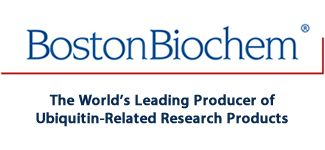
Recombinant Human His6-SUMO1 Protein, CF Summary
Product Datasheets
Carrier Free
CF stands for Carrier Free (CF). We typically add Bovine Serum Albumin (BSA) as a carrier protein to our recombinant proteins.Adding a carrier protein enhances protein stability, increases shelf-life, and allows the recombinant protein to be stored at a more dilute concentration.The carrier free version does not contain BSA.
In general, we advise purchasing the recombinant protein with BSA for use in cell or tissue culture, or as an ELISA standard.In contrast, the carrier free protein is recommended for applications, in which the presence of BSA could interfere.
UL-715
| Formulation | X mg/ml (X μM) in 50 mM HEPES pH 8.0, 150 mM NaCl and 1 mM DTT |
| Shipping | The product is shipped with dry ice or equivalent. Upon receipt, store it immediately at the temperature recommended below. |
| Stability & Storage: | Use a manual defrost freezer and avoid repeated freeze-thaw cycles.
|
Reconstitution Calculator
Background: SUMO1
Human Small Ubiquitin-like Modifier 1 (SUMO1), also known as Sentrin, UBL1, and SMT3C, is synthesized as a 101 amino acid (aa) propeptide with a predicted molecular weight of 11.5 kDa. Human SUMO1 is the most unique of the four identified SUMO proteins and shares only 44%, 47%, and 41% aa sequence identity with SUMO2, SUMO3, and SUMO4, respectively. In contrast, human SUMO1 shares 100% aa sequence identity with the mouse ortholog. SUMOs are a family of small, related proteins that can be enzymatically attached to a target protein by a post-translational modification process termed SUMOylation (1-3). All SUMO proteins share a conserved Ubiquitin domain and a C-terminal diglycine cleavage/attachment site. Following cleavage of a four aa C-terminal prosegment, the C-terminal glycine residue of SUMO1 is enzymatically attached to a lysine residue on a target protein. In humans, SUMO1 is conjugated to a variety of molecules in the presence of the SAE1/UBA2 SUMO-activating (E1) enzyme and the UBE2I/Ubc9 SUMO-conjugating (E2) enzyme (4,5). In yeast, the SUMO-activating (E1) enzyme is Aos1/Uba2p (6). SUMOylation can occur without the requirement of a specific SUMO ligase (E3), where SUMO1 is transferred directly from UBE2I/Ubc9 to specific substrates. In Alzheimer"s disease models SUMO1 has been shown to influence the generation of Amyloid-beta peptide by promoting the accumulation of BACE-1 (7). Covalent modification of Phosphatase and Tensin Homolog Deleted on Chromosome (PTEN) by SUMO1 is thought to regulate tumorigenesis by retaining PTEN at the plasma membrane, an effect that suppresses PI 3-Kinase/Akt-dependent tumor growth (8).
The ubiquitin-like SUMO-1 is conjugated to a variety of proteins in the presence of UbcH9 and the SAE1/SAE2 (human) or Aos1/Uba2 (yeast) activating enzyme. SUMO-1 is derived from the precursor pro-SUMO-1 (Accession # NM_003352). Human SUMO-1 shares 46% and 47% identity with SUMO-2 and SUMO-3 respectively. SUMOylation can occur without the requirement of a specific E3 ligase activity, where SUMO is transferred directly from UbcH9 to specific substrates. SUMOylated substrates are primarily localized to the nucleus (RanGAP-1, RANBP2, PML, p53, Sp100, HIPK2), but there are also cytosolic substrates (I kappa B alpha, GLUT1, GLUT4). SUMO modification has been implicated in functions such as nuclear transport, chromosome segregation, and transcriptional regulation.
- Desterro, J.M. et al. (1997) FEBS. Lett. 417:297.
- Bettermann, K. et al. (2012) Cancer Lett. 316:113.
- Praefcke, G.J. et al. (2012) Trends Biochem. Sci. 37:23.
- Okuma, T. et al. (1999) Biochem. Biophys. Res. Commun. 254:693.
- Tatham, M.H. et al. (2001) J. Biol. Chem. 276:35368.
- Johnson, E.S. et al. (1997) EMBO J. 16:5509.
- Yun, S.M. et al. (2012) Neurobiol Aging. [Epub ahead of print].
- Huang, J. et al. (2012) Nat. Commun. 3:911.
Citations for Recombinant Human His6-SUMO1 Protein, CF
R&D Systems personnel manually curate a database that contains references using R&D Systems products.The data collected includes not only links to publications in PubMed,but also provides information about sample types, species, and experimental conditions.
2Citations: Showing 1 - 2Filter your results:
Filter by:
- Functional Insights into ANP32A-Dependent Influenza A Virus Polymerase Host RestrictionAuthors: P Domingues, BG HaleCell Rep, 2017;20(11):2538-2546.Species: HumanSample Types: ProteinApplications: Bioassay
- Functional Insights into ANP32A-Dependent Influenza A Virus Polymerase Host RestrictionAuthors: P Domingues, BG HaleCell Rep, 2017;20(11):2538-2546.Species: HumanSample Types: Cell LysatesApplications: Bioassay
FAQs
No product specific FAQs exist for this product, however you may
View all Proteins and Enzyme FAQsRecombinant Enzymes
Recombinant Human GST-MDM2/HDM2 Protein, CF
Recombinant Human His6-UBE2N (Ubc13)/Uev1a Complex, CF
Recombinant Human UBE2I/Ubc9 Protein, CF
Recombinant Human SUMO E1 (SAE1/UBA2) Protein, CF
Reviews for Recombinant Human His6-SUMO1 Protein, CF
There are currently no reviews for this product. Be the first toreview Recombinant Human His6-SUMO1 Protein, CF and earn rewards!
Have you used Recombinant Human His6-SUMO1 Protein, CF?
Submit a review and receive an Amazon gift card.
$25/€18/£15/$25CAN/¥75 Yuan/¥1250 Yen for a review with an image
$10/€7/£6/$10 CAD/¥70 Yuan/¥1110 Yen for a review without an image
ebiomall.com






>
>
>
>
>
>
>
>
>
>
>
>
如果用组织DNA提取试剂盒,提出来的就是组织细胞的DNA了
试剂里面含有的是病毒的抗原,现在基本都是人工合成或提取的,跟病毒完全是两回事
短截就是把枝条剪短,主要作用是促使其抽生新梢,增加分枝数目,以保证树势健状和正常结果。短截常用于骨干枝组修剪,结果枝组修剪,和树体局部更新复状。
短截按其长度可分为:
① 中短截:在一年生枝的中部短截,剪后萌发的顶端枝条,长势强,下部枝条长势弱。
② 重短截:剪去一年生枝的2/3。剪后萌发出的枝条较强状,一般用于主侧枝延长头修剪。
③ 重剪:剪去一年生枝的3/4-4/5,剪后萌发出的枝条长势强状,常用于发育枝作延长枝头和徒长果枝,中果枝的修剪。
④极重短截:剪去一年生枝的4/5以上,萌发后的枝条中庸偏状,常用于将发育枝和徒长枝培养结果枝组。
⑤留基部2芽剪:剪后萌发枝条较旺盛,常用于预备枝的修剪。对于幼龄树,树势较旺,以培养良好而牢固的树形结构,提早结果为主要目的,以轻短截,少疏间为主,从始果期到盛果期,主要使桃树多结果,并形成好的树形。









